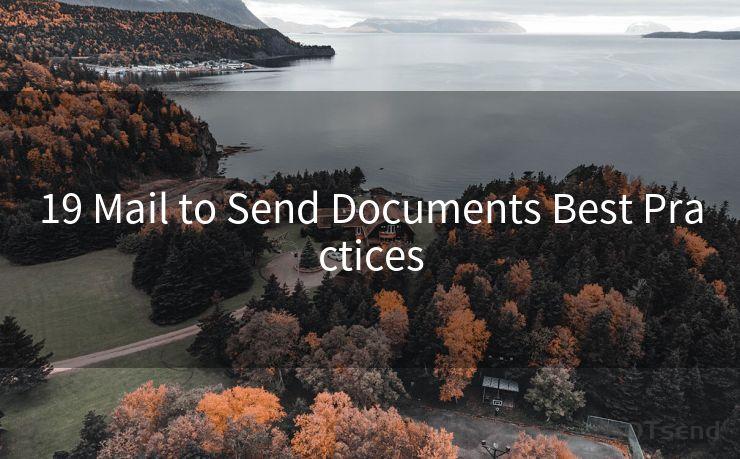19 Mail to Send Documents Best Practices




In the digital age, emailing documents has become a common and convenient way to share information quickly and efficiently. However, there are certain best practices to follow when sending documents via email to ensure smooth and secure transmission. Here are 19 tips to help you master the art of emailing documents.
1. Use a Professional Email Address
When sending important documents, always use a professional email address. This lends credibility to your message and ensures that your email is taken seriously by the recipient.
2. Clear and Concise Subject Line
Craft a subject line that briefly and accurately summarizes the content of your email and the attached documents. This helps the recipient understand the email's purpose at a glance.
3. Check File Compatibility
Before sending a document, confirm that the recipient can open and view the file format you're sending. Common formats like PDF or DOCX are usually safe bets.
4. Virus Scan Your Documents
Always scan your documents for viruses before attaching them to an email. This ensures that you're not accidentally spreading malware to your recipients.
5. Compress Large Files
If you're sending a large file, consider compressing it to reduce the file size and make it easier to send and receive.

6. Use Secure Methods for Sensitive Documents
When sending sensitive or confidential documents, utilize secure email options like encryption or use a secure file-sharing platform.
7. Double-Check Recipients
Before hitting send, always double-check the email addresses in the "To" and "CC" fields to avoid sending sensitive information to the wrong person.
8. Include a Clear Message
In the email body, briefly explain the purpose of the attached documents and provide any necessary context or instructions.
9. Test the Attachment
Send a test email to yourself before sending the actual email to ensure that the attachment works properly and looks as intended.
10. Avoid Sending Too Many Attachments
If possible, try to consolidate multiple documents into one file to simplify the process for the recipient.
11. Use Descriptive File Names
Give your attachments descriptive and specific file names to help the recipient understand their content.
12. Consider Mobile Devices
Keep in mind that many people check their emails on mobile devices. Ensure that your attachments are mobile-friendly.
13. Follow Up
After sending important documents, consider sending a follow-up email to confirm receipt and answer any questions the recipient may have.
14. Avoid Sending Unnecessary Attachments
Only attach documents that are absolutely necessary to convey your message. Unnecessary attachments can clutter the email and make it less effective.
15. Use a Reliable Email Provider
Choose an email service that is known for its reliability and security to minimize the chances of your email being flagged as spam or not being delivered.
16. Respect Privacy
Never send personal or confidential information about others without their explicit permission.
17. Proofread Your Email
Take a moment to proofread your email for grammar and spelling errors before sending it. This helps maintain a professional appearance.
18. Archive Sent Emails
🔔🔔🔔
【AOTsend Email API】:AOTsend is a Managed Email Service for sending transactional emails. Support Email Types: reminders, authentication, confirmations, notifications, verification codes, invoices, password resets, account activations, billing statements, two-factor authentication (2FA), and one-time passwords (OTP) emails, etc. $0.28 per 1000 Emails. 99% Delivery, 98% Inbox Rate.
You might be interested in:
Why did we start the AOTsend project, Brand Story?
What is a Managed Email API, How it Works?
Best 25+ Email Marketing Platforms (Authority,Keywords&Traffic Comparison)
Best 24+ Email Marketing Service (Price, Pros&Cons Comparison)
Email APIs vs SMTP: How they Works, Any Difference?
Keep a copy of all important emails you send, including attachments, for future reference.
19. Update Your Contact List Regularly
Regularly update your email contact list to ensure that you're always sending documents to the correct and most up-to-date email addresses.
By following these 19 best practices, you can ensure that sending documents via email is a smooth, secure, and efficient process. Remember, email is often the first point of contact in professional communications, so it's essential to make a good impression with clear, concise, and professional emails.




Scan the QR code to access on your mobile device.
Copyright notice: This article is published by AotSend. Reproduction requires attribution.
Article Link:https://www.mailwot.com/p6746.html



